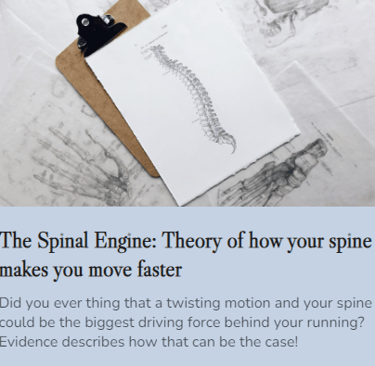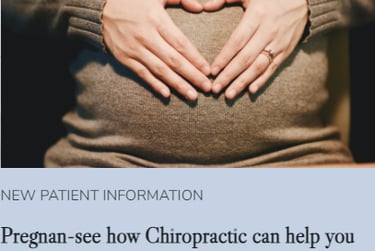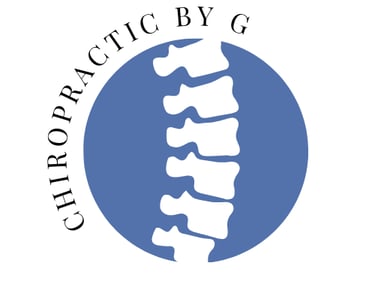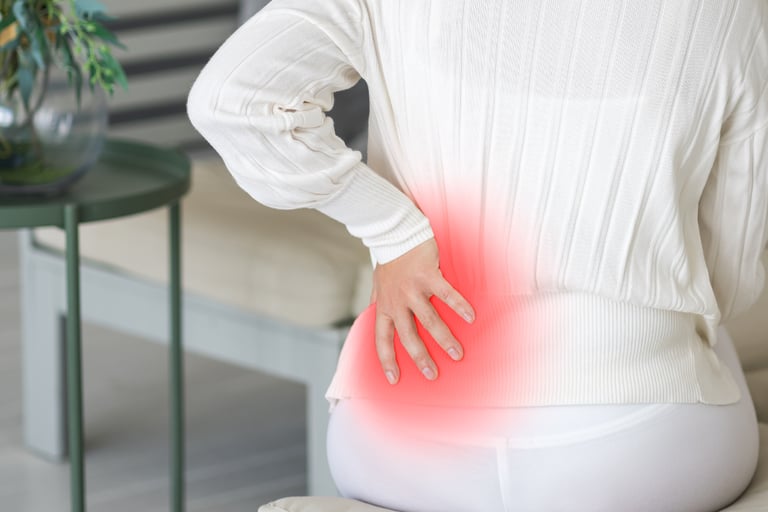Understanding Lower Back Pain


Written by Dr Gareth Williams. Chiropractor and part-owner of Chiropractic by G South Africa
Updated 10 April 2024
Lower back pain is a big problem worldwide, leading to disability for many people. It's not just about physical discomfort; it affects our minds and bodies in different ways. This article explores why people get lower back pain, looking at both psychological and physical reasons. We'll also share some tips on how to prevent it and keep your back healthy.




Related Stories
Socio-economic causes of lower back pain
Socio-economic factors significantly influence the prevalence of lower back pain, often manifesting through various occupational settings.
Desk jobs, characterized by:
Prolonged sitting
Poor Bent Over Postures
Rounded Shoulders
These contribute to lower back pain due to muscular imbalances, reduced blood flow, and increased pressure on the spine. The lack of movement and poor ergonomics exacerbate these issues, leading to discomfort and stiffness over time. The human body was not designed to be sitting at a desk for 6+ hours a day. So we are taking a prehistoric design and placing it in an evolved and modern setting. Like puzzle pieces that just don't fit.
See: DESK POSTURE GUIDE
Similarly, professions involving extensive driving, such as truck driving or commuting long distances, expose individuals to prolonged sitting and repetitive vibrations, which can strain the lower back muscles and contribute to spinal misalignment.
Contrastingly, occupations involving heavy physical labor, such as construction work or warehouse activities, pose a different set of challenges. The repetitive lifting, bending, and twisting motions place immense strain on the lower back, leading to muscle fatigue, ligament sprains, and even disc herniation.
Biological causes of lower back pain
Lower back pain, a pervasive affliction affecting millions worldwide, often stems from a complex interplay of biological factors within the musculoskeletal system. In this section, we delve into the intricate mechanisms involving muscles, ligaments, tendons, joint capsules, facet syndromes, and disc injuries, shedding light on their roles in the onset and perpetuation of lower back pain.
Biological cause of lower back pain:
Muscles
Ligaments and tendons
Joint capsules
Facet joints
Annulus fibrosis
Intervertebral disc
Muscles, Ligaments, and Tendons: The lumbar spine is surrounded by a network of muscles, ligaments, and tendons that provide structural support and facilitate movement. However, imbalances or injuries within this intricate system can lead to lower back pain. Muscular strains, resulting from overexertion or repetitive movements, often manifest as localized discomfort and stiffness. Similarly, ligament and tendon injuries, such as sprains or strains, contribute to pain and inflammation in the lower back region.
SEE: Stretches and exercises to prevent lower back pain
Joint Capsules and Facet Syndromes: The facet joints, located at the posterior aspect of the spine, play a crucial role in guiding spinal movement and maintaining stability. However, degenerative changes or trauma can disrupt their function, leading to facet joint dysfunction or facet syndrome. Inflammation of the joint capsules surrounding the facet joints results in localized pain, tenderness, and limited mobility, particularly during extension or rotation of the spine.
Disc Injuries: Intervertebral discs, serving as cushions between adjacent vertebrae, are susceptible to injury and degeneration. Disc herniation occurs when the gel-like nucleus protrudes through a tear in the annulus fibrosus, compressing nearby nerves and causing radiating pain, numbness, or weakness in the lower back and legs. Degenerative disc disease, characterized by wear and tear of the disc structures, contributes to chronic lower back pain and diminished spinal flexibility.
Understanding the intricate biological mechanisms underlying lower back pain is crucial for effective management and prevention. By targeting specific structures within the musculoskeletal system and adopting preventive measures such as proper posture, regular exercise, and ergonomic practices, individuals can alleviate symptoms and promote spinal health, thus reducing the burden of lower back pain on a global scale.
Red Flags of lower back pain
Recognizing Red Flags: When Lower Back Pain Signals Something More Serious
RED FLAGS:
Persistent Pain
Severe or Unrelenting Pain
Radiating Pain
Loss of Bowel or Bladder Control
Fever or Chills
History of Cancer or Recent Trauma
While lower back pain is often a common and manageable condition, certain symptoms may indicate underlying issues that require prompt medical attention. Understanding these "red flags" can help individuals distinguish between benign discomfort and potentially serious conditions. In this section, we explore some key indicators that warrant further investigation when experiencing lower back pain.
Persistent Pain:
While occasional bouts of lower back pain are common, persistent or worsening pain that persists for more than a few weeks should raise concerns. This could indicate underlying structural damage or inflammatory conditions that require medical evaluation.
Severe or Unrelenting Pain:
Intense, unrelenting pain that does not respond to rest or over-the-counter pain medications may suggest a more serious problem, such as a herniated disc, spinal fracture, or infection. Seek immediate medical attention if you experience severe pain that interferes with daily activities or sleep.
Radiating Pain:
Lower back pain that radiates down one or both legs, often accompanied by tingling, numbness, or weakness, may indicate compression of the spinal nerves (radiculopathy). This can result from conditions such as a herniated disc, spinal stenosis, or sciatica and requires medical evaluation to prevent further nerve damage.
Loss of Bowel or Bladder Control:
Difficulty controlling bowel or bladder function, along with lower back pain, may indicate cauda equina syndrome, a rare but serious condition caused by compression of the nerve roots at the base of the spinal cord. This requires immediate medical attention to prevent permanent neurological damage.
Fever or Chills:
Lower back pain accompanied by fever, chills, or other signs of infection may indicate an underlying systemic condition, such as spinal osteomyelitis or a urinary tract infection. Prompt medical evaluation is necessary to initiate appropriate treatment and prevent complications.
History of Cancer or Recent Trauma:
Individuals with a history of cancer or recent traumatic injury to the spine are at higher risk of developing serious spinal conditions, such as metastatic cancer or spinal fracture. Any new onset of lower back pain in these individuals should be thoroughly evaluated by a healthcare professional.
CLICK HERE TO CALL EMERGENCY SERVICES
While most cases of lower back pain resolve with conservative measures, it is essential to recognize the red flags that may indicate more serious underlying conditions. If you experience any of these warning signs, seek medical attention promptly to receive an accurate diagnosis and appropriate treatment. Early intervention can help prevent complications and improve outcomes for individuals with lower back pain.
Was this article useful? Find more information on our social media!
More information
For more information on lower back pain visit these useful sites:
Suffering from lower back pain? Write to us!
Where to find us!


Stonehill Medical Centre
Stonehill Crossing
Greenstone, Modderfontein
All rights reserved © chiropractic by g 2024


